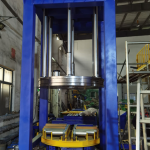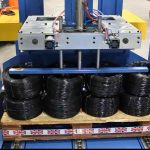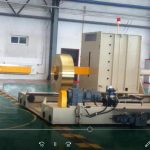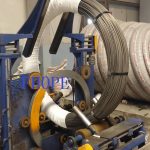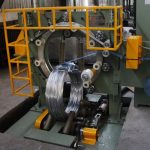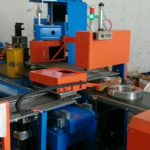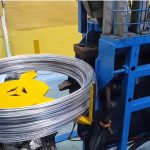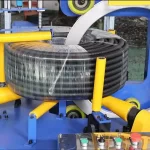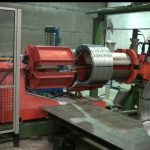The Steel Wire Coil Unwinding Machine for unwinding the steel wire from the basket. It is an psssive wire feeding device for re-winding or re-coiling.
• The main frame supports the coil of steel wire that needs to be unwound. It is robust enough to handle the weight of the coil.
• The coil support arms or spindles hold the steel wire coil in place on the frame. They allow the coil to rotate freely as the wire is unwound.
• Tensioning devices like spring loaded arms, weights or hydraulic tensioners apply a constant unwinding tension to the wire. This ensures smooth unwinding with minimum slack or tangling.
• Drive wheels or feed rolls engage the wire and provide a controlled unwinding speed. The speed can be adjusted based on downstream processes.
• They are commonly used to unwind wire for applications like wire drawing, wire mesh making, wire rope production and fencing wire production.
• Larger machines can handle wire coils weighing up to several tons and measuring 3-4 meters in diameter. Smaller ones accommodate coils as small as 20 kg.
• The unwinding speed depends on the machine size and type, ranging from around 10-3000 meters per minute for common models.
• Tensioning systems play an important role in maintaining consistent unwinding speed. Spring tensioners are cheap and simple, while hydraulic units offer more precise tension control.
• Wire guide chutes often have adjustable guides to accommodate different wire diameters within the machine’s specification range.
• Some machines have counters to monitor the amount of wire fed or time taken to unwind a coil. This helps track material usage.
• For especially large or heavy coils, the unwinding machine is often mounted on a motorized base for automatic positioning under the coil. This reduces operator lifting requirements.
• Advanced machines have PLC controls for integrating with automation lines. They offer features like auto diameter detection and tension adjustment.
• Maintenance of drive wheels, tensioners and guides is needed periodically to ensure low friction and constant unwinding force.
• Proper grounding of the machine is required to dissipate static electricity built up during high speed unwinding. This reduces risks of sparks.
